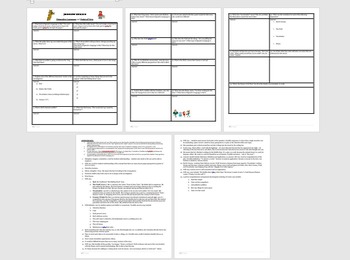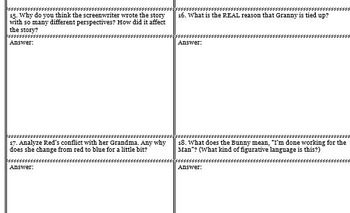Movie Analysis: Hoodwinked (Extensive; advanced) PDF
- PDF
Description
Intensive analysis of the deconstructed fairy tale cartoon mystery, Hoodwinked (currently streaming on Netflix), a retelling of Little Red Riding Hood.
Answer key and teacher ideas are included.
Lesson Plan includes more than 20 varied questions for advanced middle school or regular high school students. Questions range from knowledge level to evaluation (Bloom's taxonomy); lessons can be adapted to the needs of your class.
The movie, Hoodwinked, is a cartoon - yet the simple story is an excellent way to let your students practice literary analysis and have a discussion on perspective and point of view.
Prerequisite/Prior knowledge/to review before showing video: types of figurative language, point of view, perspective, irony.
Appropriate for: 8th grade, 9th grade, 10th grade, special education, advanced
Concepts reviewed include: genre, point of view, figurative language, tropes, fairy tales, mystery, detective, the importance of multiple perspectives, perspective.





